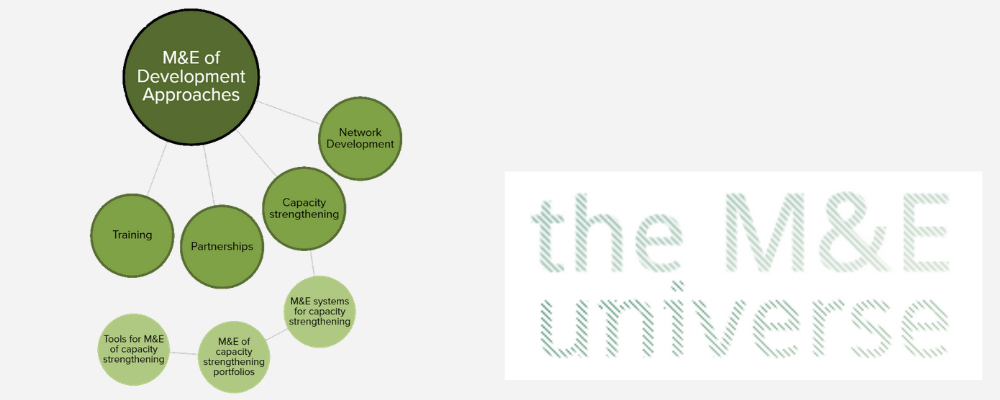
The M&E Universe, INTRAC’s free online resource for M&E practitioners, has expanded to include a new set of papers on the monitoring and evaluation of capacity strengthening. This set of papers forms the second part of the M&E of Development Approaches section, which launched in July 2020 with six papers on the M&E of advocacy.
New to the M&E Universe? Visit our Project page to find out about this resource, and get a quickstart guide to using it.
All of the new papers were co-written by M&E expert Nigel Simister. All papers were contributed to by Alison Napier. Full credits for the papers are given below and in the documents themselves. It should be noted that, given ongoing debate on what makes for good practice in M&E of capacity strengthening, the content of the papers is not intended to be definitive.
What are the new papers?
The M&E of Development Approaches section of the Universe focuses on how best to measure the work that civil society organisations do outside of direct service delivery. These approaches include advocacy, capacity strengthening, and mobilisation. The papers launched in January 2021 focus specifically on capacity strengthening.
Four papers are dedicated to the M&E of capacity strengthening. These were written by Nigel Simister, Lucy Morris and Rick James and are as follows:
- The core paper on M&E of capacity strengthening is designed as an introductory paper. It covers some of the main challenges and conceptual issues. A common theme throughout the paper is how to undertake M&E in a way that strengthens the capacity development process and does not undermine it. The paper concludes with INTRAC’s top ten tips for conducting M&E in capacity strengthening work.
- The paper on M&E systems for capacity strengthening looks at how to develop a simple M&E system for capacity strengthening initiatives aimed at individual organisations, or a small number of organisations. The paper also advises on how to ensure that capacity strengthening and M&E work complement each other, avoiding unnecessary duplication.
- By contrast, the paper on M&E of capacity strengthening portfolios covers work designed to support a large number of organisations. It includes a list of indicators that are commonly used to capture change across multiple organisations.
- The final paper is called Tools for M&E of capacity strengthening. It lists some of the different tools and methodologies that can be used to monitor and evaluate capacity strengthening work.
Three further papers in this section deal with related themes and approaches.
- A paper on M&E of partnerships (written by Nigel Simister with contributions from Lucy Morris) looks at partnership more broadly, as distinct from capacity strengthening, and describes some simple approaches that CSOs can use to monitor and evaluate their partnerships.
- A paper on M&E of training (written by Nigel Simister and Paula Haddock) covers work designed to assess training at an individual level. It covers some of the main models CSOs use to evaluate formal training.
- Finally, the paper on M&E of network development (written by Nigel Simister with contributions from Clare Moberly and Jenny Ross) provides advice on how to monitor and evaluate the development of networks, focusing particularly on social network analysis and network surveys.
Additionally, the M&E Universe has also been updated with a new paper on the Qualitative Impact Protocol (QUIP). This forms a part of the Complex methods section, and was written by Vera Scholz, with contributions from James Copestake and Fiona Remnant.
Already using the M&E Universe? We would love for you to contact us with your stories of how it is impacting your monitoring and evaluation work.
The new papers are available now.
- To keep up with INTRAC news, including about the M&E Universe, by signing up to our mailing list
- For opportunities to build your personal or organisational skills in monitoring and evaluation, advocacy, or other subjects view INTRAC’s upcoming training courses